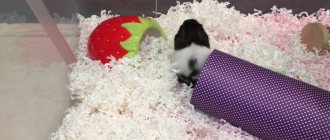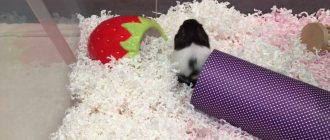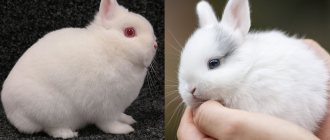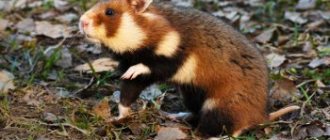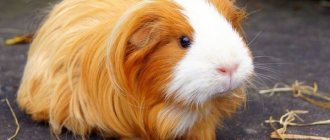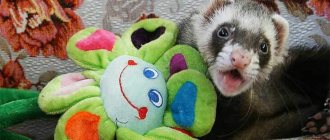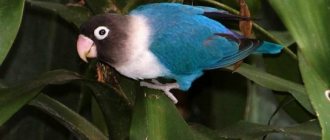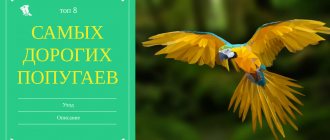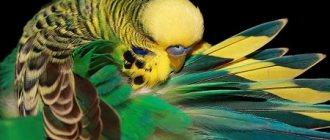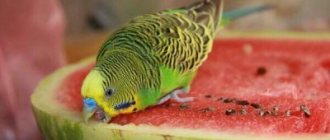People do not know about many animals inhabiting our planet. However, everyone has heard about such funny exotic birds as the parrot. Very often, and indeed always, they can be found in pet stores, at exotic bird exhibitions, and, of course, in films, especially about pirates. But many people do not know all parrots, but only those that are popular among parrot lovers.
In fact, there are a huge number of species of parrots; perhaps not all of them have been discovered by ornithologists yet. Multi-colored and parrots with monotonous plumage. There are big ones and small ones. Some of them are comparable to the size of an ordinary sparrow or dove, and some species can be compared to birds, large in mass and size. But there are only a few of the largest ones in the world.
Amazon yellowhead
The favorite habitat of these beautiful birds is the forests of Mexico and other Latin American countries. They feed on berries, seeds, and leftover food from tourists.
The name speaks for itself: the head is painted yellow, which is still closer to lemon color. The parrot itself is green, and the elytra are slightly pinkish or reddish. The beak is large and sharp (they easily use it to open nuts). The species is in danger of extinction. Can reach a length of 42 cm . About 6 thousand of these parrots are registered in their natural habitat.
Amazon blue-faced
An interesting name, which again speaks about the appearance of the head of this bird. The front of this parrot's head is painted bright blue. You may also notice that he has red spots in the neck or chest area.
The rest of the plumage is green, but slightly darker than the previous representative. The beak is slightly smaller, and from a distance it may look like a pigeon's. Can reach 49 centimeters in length. They live mainly on the islands of Lesser Antilia. This type of parrot received the title of national bird in the state of Saint Lucia.
Large vase parrot
It has nothing in common with this decorative household item. It received this name “vase” due to the linguistic characteristics of the local residents. It lives on the Komodo Islands and in the forested parts of Madagascar.
From a distance it may resemble a bird of prey of the eagle species, but its huge, strong beak makes its presence felt. Its massive body can reach up to 50 centimeters This parrot weighs about one kilogram. Despite the fact that it is somewhat similar to a predator, it does not engage in predation, but is capable of cracking the shell of a large nut in a matter of seconds.
Yellow-eared mourning cockatoo
This is one of the representatives of the cockatoo. Lives in Australia. The name is familiar to almost everyone, but this particular one, the yellow-eared mourning, is quite rare.
In the area of the head, on the sides there are bright yellow spots, these look like ears. Mourning cockatoo because the rest of its body is black. It is also called mourning because not only its appearance, but also its ominous screams seem very gloomy. Can reach 60 cm . It eats the same thing as the other listed parrots. It flies heavily and is very massive. They lead only a daily lifestyle.
Owl parrot
Another name is kakapo. It very much resembles an owl in appearance, but apart from its color, it is green. Kakapo are very large and heavy. That's why they fly less than they walk. As strange as it may sound, these parrots emit a strong floral aroma. They are not afraid of people, even in their natural habitat.
It may seem sleepy, just like an owl. The length of its body can reach 60-65 cm , and its weight sometimes reaches 4 kilograms. The beak is small, strongly pressed to the bottom of the head. There is also an opinion that the owl parrot, like the owl, feeds on small rodents. This is wrong. Of the predatory species of parrots, there is only one. The only thing that brings him closer to owls is that he is only nocturnal, and kakapo sleeps during the day.
Features of keeping large birds at home
First of all, it is a cell. A large bird requires a large living space, and some species can only live in enclosures. In cramped conditions, large parrots immediately begin to experience serious stress, and at the same time get sick.
The optimal cage size, for example, for a cockatoo is 100 x 100 x 170 cm . However, ordinary options will not work here. All large birds have the same large and powerful beak. They easily bite through thin metal rods. Therefore, the cage must be durable, and such ones can only be found in the premium segment.
It is also worth considering that large parrots have a high level of intelligence, and it requires an outlet. If the owner does not have enough time to communicate with the pet, then he should organize leisure time. That is, provide toys and other entertainment accessories. Just a mirror, bells and a ladder are not enough here.
Black cockatoo
The black cockatoo is already more similar to its relative, which can often be found in pet stores. But he is similar only in body shape. The color of black cockatoos is distinctive blue-green. He has a large, beautiful crest on his head. Cheeks are scarlet. Cockatoos have a massive curved beak, somewhat reminiscent of a dinosaur fang in shape.
Feeds on large nuts and fruits. Very appreciated by lovers of collecting exotic birds. Body length can be up to 80 centimeters . Just like many species of cockatoos, they are well trained to speak.
Where can I buy an exotic bird?
any exotic birds, especially large ones, in nurseries from professional breeders. They will provide documentary evidence of the breed, vaccinations received and examinations by a veterinarian. You can find breeders on specialized forums or by looking through message boards.
Buying exotic birds at the poultry market is fraught with serious consequences. The bird may turn out to be out of breed, elderly and with a whole bunch of diseases.
As for the price, it varies widely, depending on the subspecies of the bird, its age, skills and the pricing policy of the breeder. For example, a young white cockatoo can be bought for 30,000 rubles, a large yellow-crested one for 100,000, and a hyacinth macaw will cost 1.5 million rubles.
Red macaw
Very often found in advertising, in films about pirates and in pet stores. So to speak, a branded parrot. Very colorful appearance, feathers of all colors may be present in different parts of the body. Its wingspan is very large.
At the moment, it is becoming extinct, since its color does not camouflage at all, and parrot catchers for sale, in this regard, very easily manage to catch this bird. They are considered pests, since searching for food on their own is not always to their taste: macaws regularly attack plantings of cultivated plants. Body length often exceeds 90 centimeters , but does not exceed 95.
Everything you need to know about big parrots
When purchasing large birds, we must not forget about the peculiarities of breeding and maintenance. You need to consider the dimensions of your feathered pet and buy an aviary or cage. For Amazons and Grays, the size of the house should be at least 45x45x70 cm. Such cages are sold in pet stores. If the choice is a macaw or cockatoo of large varieties, you need an aviary for large species. Sometimes you cannot find a cage of a suitable size on the market, so you need to order it.
A cage or aviary is not all the needs of poultry. Large parrots need special toys. Perches, drinking bowls, feeders, and swings are also needed to spend time productively while the owner is away.
Macaw blue - yellow
The same as red, only the colors are dominated by two colors: blue and yellow. Nuts and fruits are his main delicacies. Macaws are easy to learn to speak, which is why they are highly valued among buyers of overseas animals.
At home, they require quite a lot of attention and care. There is an opinion that a macaw can not only learn to speak, just like a cockatoo, but also knows how to understand what he is saying. The blue-and-yellow macaw is slightly larger than the red one; its body length can exceed 95 centimeters . Having noticed such a bird in the wild, it is difficult to forget this sight.
Kakapo
The owl parrot is the largest representative of this species of birds.
The weight of the bird can reach four kilograms, and the maximum body length is only 60 centimeters. Due to evolution, the kakapo does not fly. In return, the bird acquired strong legs, thanks to which it runs quite quickly. Despite not the most athletic body, the owl parrot's endurance is excellent. Externally, the head of the bird is similar to the head of an owl; kakapo also prefers to be active at night. Individuals of this species have yellow-green plumage and a small number of dark spots. At the moment, there are just over a hundred of them in the wild, which makes it unrealistic to purchase a bird as a pet.
Macaw hyacinth
Another representative of the macaw. He ranks first in this ranking. The rarest and largest are hyacinth macaws. Why hyacinth is included in the name is a moot point: either the parrot itself is associated with this flower, or its bright blue color makes itself felt. The beak is very massive. The price of such a “bird with a title” reaches hundreds of thousands of rubles per individual! We teach speaking, the voice is loud and rude.
It lives in the forests of South America and feeds mainly on fruits and large nuts. The species is carefully protected in the wild, as it is becoming extinct due to regular trapping. Moreover, it is clearly visible even in the dense forests of this continent, since hyacinth macaws are not only painted in unmasking colors, but also scream very loudly. The body length reaches one meter.
Top 10 most famous species with photos
Among other wild representatives of the family, ornithologists have identified several large birds that adapt well to life in captivity and can please the owner not only with their impressive size, but also with their intelligence.
White cockatoo Alba
The body length of the largest bird does not exceed 50 cm and weighs 600 g . The plumage is bright white, and yellowish zones can be seen in the underwing zone. One of the notable features of the cockatoo is the presence of a crest, which acts as an indicator of the parrot's mood.
The species is distributed on the Indonesian group of islands. The bird prefers to inhabit forests near bodies of water. Animals lead a sedentary lifestyle, gathering in groups of 40-50 individuals. If there is a lack of food, they can migrate to neighboring islands.
White cockatoos form pairs for life. If one of the partners dies, the other becomes severely depressed and subsequently makes no attempt to find a replacement.
The cockatoo is trusting and easily makes contact with people. He has a natural artistic gift and is also able to learn up to 20 words. In captivity, with proper care, the bird's life expectancy is about 50-70 years.
Moluccan cockatoo
The body length of a mature animal varies between 46-52 cm and weighs 850 g. The dominant color of the plumage is white. The chest and abdomen are highlighted in a pale pink shade. The male is no different in color from the female. The length of the crest reaches 15 cm.
The main population is concentrated in the Moluccas . The parrot inhabits tropical rainforests and coastal areas. The animals keep in small groups of 20 birds, split into pairs. The number of representatives of this species has dropped below 10,000 individuals. Since 1960, the Moluccan cockatoo has been listed in the Red Book.
The parrot easily adapts to life in captivity and quickly gets used to human hands. The bird is intelligent, but problems arise when imitating human speech. The maximum you can count on is a dozen words and phrases. The life expectancy of a pet is 50-80 years.
Black palm cockatoo
The bird's body length is about 80 cm and weighs 900 g. The predominant color of the plumage is black and slate. A greenish tint can be seen in the rays of the sun. A notable feature of palm cockatoos is their large and at the same time powerful beak, growing up to 9 cm. The crest consists of ribbon-like feathers curled back. Scarlet-red areas are noticeable on the cheeks.
The parrot lives in New Guinea and northern Australia, inhabiting savannas and tropical forests. Birds can survive either in groups or alone. In search of food, they deftly maneuver through dense thickets of tall trees.
The voice of the black palm cockatoo is quite unpleasant: loud, harsh and squeaky. Especially in an excited state.
The bird is most often kept in zoos. The powerful beak of a cockatoo can bite through 5 mm thick metal rods. Therefore, the only place from which a parrot will not escape is an aviary with a strong lattice. The pet is quite demanding in terms of training and training: mistakes can provoke aggression.
In addition, palm cockatoos are vindictive and remember everything that a particular person has done. However, the bird is considered one of the smartest among other members of the family. She is capable of performing very difficult tricks for birds.
Greater yellow-crested cockatoo
The body length reaches 50-55 cm with a weight of about 950 g. The dominant color of the plumage is white with rare yellow accents: flight and tail feathers, crest. The size of the beak is proportional to the size of the bird and is strongly curved.
The largest populations are found on the islands of Tasmania, New Guinea and the northern part of Australia. The parrot prefers eucalyptus forests and savannas with tall, dense trees located near bodies of water. Both parents, not just the female, participate in the arrangement of the nest. The bird feeds on fruits, nuts, and plant buds, but does not hesitate to fly onto farm lands.
The yellow-crested cockatoo has great difficulty imitating human speech and is not able to master more than 10 words. But the pet perfectly copies other sounds: barking dogs, meowing, simple musical compositions, the operation of household appliances, etc. Like other cockatoos, the yellow-crested cockatoo has innate artistry, which is why it can often be seen at circus performances. The bird's lifespan is about 50 years.
Yellow-eared mourning cockatoo
The bird's body length fluctuates around 60 cm and weighs almost a kilogram. The plumage is dark brown, and rare light spots are scattered throughout the body. There are several yellow stripes at the tip of the tail. Unlike other members of the family, mourning cockatoos have virtually no crest.
The main population of birds is concentrated in eastern Australia and the islands adjacent to this part of the mainland. The animal's diet consists of insect larvae and plant seeds. Ornithologists do not recommend considering mourning cockatoos as pets. The parrot is picky both in content and in training. The bird is suitable only for experienced breeders.
The female mourning cockatoo lays 1-2 eggs, and the male provides her with food. As a rule, only one chick survives. Moreover, it remains in the nest not for 30-60 days, like other parrots, but for about six months.
Hyacinth macaw
The length of mature individuals can reach 90-100 cm , and the weight of domestic animals often exceeds 1.5 kg. The plumage of this huge parrot is matte cobalt blue. Bright yellow stripes are visible around the eyes and above the beak. The beak looks hypertrophied considering the size of the bird. With its help, she easily cracks nuts and other hard objects.
The habitat of the hyacinth macaw is Brazil, Paraguay and Bolivia. The parrot inhabits palm groves and forest plantations near bodies of water. Birds live in small groups of a dozen individuals each. In search of food, they can fly over an area up to 10 km away. The animal's favorite delicacy is berries, figs and snails.
Despite its complex nature, the hyacinth macaw is easy to train and relatively quickly gets used to human hands. The parrot imitates sounds well, including human speech: its vocabulary is limited to 40-50 words. Life expectancy is about 40-50 years.
The hyacinth macaw is endangered. At the beginning of the 21st century, the number of wild birds had decreased to 6,000 individuals. Therefore, the species is listed in the Red Book.
Red Macaw (Macao)
The parrot's body length is 80-90 cm and weighs 1.2 kg. The coloring is the calling card of the red macaw. Most of the plumage is painted bright red, the rest of the area is combined in blue, yellow and brown shades. The beak and part of the head have white areas.
The bird population is dispersed from Mexico to Uruguay. The red macaw inhabits tropical forests, nesting high in the treetops. The main diet of the animal is plant food: seeds, nuts and fruits. It also does not disdain insects.
In search of food, the parrot may fly into farmland. Given its gluttony, it causes serious damage to agricultural crops. The bird can cover about 15 km in a day. Partners become attached both to each other and to the nesting site.
The Indians hunted the red macaw for a living. Feathers were used to make arrows and organize ritual ceremonies, and parrot meat was considered a delicacy.
The bird quickly adapts to captivity and easily gets used to human hands. With the right approach, the red macaw can learn up to 100 words and consciously use phrases. The parrot is also capable of performing complex tricks. Life expectancy in captivity is about 40-50 years.
Blue and yellow macaw
This is one of the most popular among other large domesticated birds. The parrot's body length is 80-90 cm, and its weight reaches 1.3 kg. The plumage is dominated by two colors - yellow and blue, visually dividing the body into two parts. There are two white areas with black stripes on the head. The beak is massive and powerful. With its help, the parrot not only cracks nuts, but also easily bites through wooden branches.
The bird lives from Panama to the southern regions of Brazil, preferring to nest in tropical forests closer to water. Sometimes found in mountainous areas. The animal becomes strongly attached to its habitat and only leaves it in case of extreme need. In search of food, it can travel up to 25 km. Birds do not form groups, living exclusively in pairs.
Taking into account other representatives of the parrot family, the blue-and-yellow macaw has a well-developed intellect. The pet is non-aggressive, quickly learns tricks and almost perfectly imitates the human voice. Life expectancy is 40-50 years with proper care.
Blue Spix parrot
The body length of an adult is about 55 cm and weighs 400 g. Externally, the bird looks faded compared to its colorful relatives. The dominant plumage color is dark blue. The head is slightly lighter, and light blue zones can be seen on the abdomen.
The habitat of the blue parrot is Brazil. But, alas, this species is no longer found in the wild. The last specimen was seen in 2000. A little earlier, ornithologists tried to introduce domesticated animals from private collections into their natural habitat. But the birds died.
The reason for the disappearance of blue parrots lies in poaching and cutting down of the birds' favorite nesting places - tabebuia trees. Blue parrots used the same flight routes year after year that poachers took advantage of. African bees are also to a large extent to blame, having occupied hollows suitable for breeding birds.
Judging by the declarations of breeders, there are only 500 birds of this species left in the world . But it is extremely difficult to restore the former population, because there is a high risk that the existing animals are of related blood. Moreover, only 80 pets out of 500 are in the working group for resuscitation of the species.
Owl parrot
Another name for the species is kakapo. This is a real giant among other representatives of parrots. The body length reaches 60 cm, and mature individuals weigh 3-4 kg. The plumage is very soft to the touch, with a yellow-green tint. The beak is disproportionately large, slightly curved and very powerful.
The bird lives in New Zealand, preferring to nest in dense forests with high humidity. Parrots are nocturnal: during the day they hide from the eyes of predators, and in the evening they go out hunting, hunting for berries, shoots and plant juice.
Kakapo is the only parrot that cannot fly. But the underdevelopment of the wings is compensated by strong and hardy paws, capable of covering an impressive distance, as well as tearing apart dense thickets. Dug holes under trees or in rock crevices serve as nests.
The bird is unsuitable for home keeping, so most often it can be seen in zoos and in large enclosures of professional breeders. The parrot boasts a high level of intelligence, but imitates sounds with great difficulty.
The species is on the verge of extinction. Today, about 150 wild individuals have been recorded. A specially created organization, Kakapo Recovery, is engaged in restoring the population, breeding approximately 30-50 chicks per year starting in 2022.
